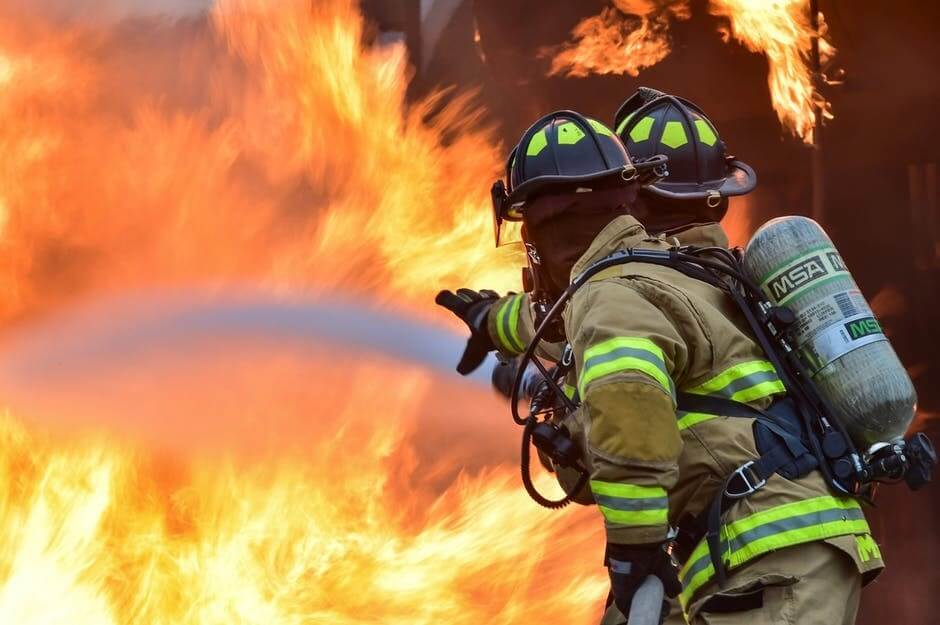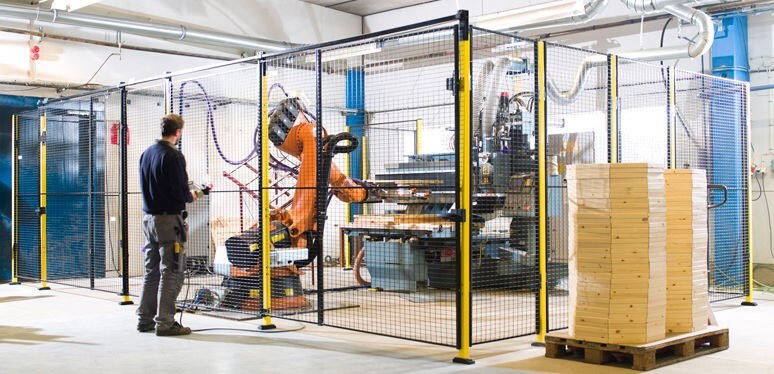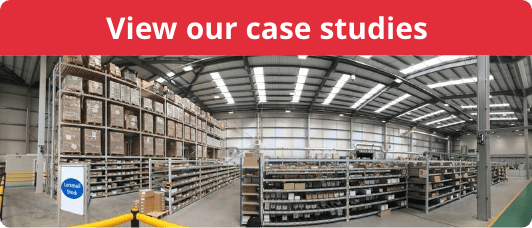A Guide to Fire Safety In The Warehouse | BSE UK
Fire Safety In The Warehouse: 5 Step Checklist
Fire Safety In The Warehouse: 5 Step Checklist

Warehouse fires have been a hot topic of conversation recently, with a large fire devastating a warehouse on White Hart Lane and residents being evacuated in North West London following a huge blaze in the same month.
Fortunately, in both cases, the blazes were controlled (by a total of 190 firefighters!) without any injuries.Warehouse fires are devastating for business, not only destroying stock and causing long downtime but also putting employees at risk. To help ensure fire is not a risk in your warehouse, take a look at our 5 step fire safety checklist.
Don’t Overload Your Racking
Not only can overloaded pallet racking cause damage to your system, it can also pose a serious fire hazard. With more stock to burn through in a condensed space, overloaded pallet racking can be the difference between controlling a fire and letting it spread to the rest of your warehouse.
Ensure that you stick to racking weight limits and don’t overload – instead, find ways to maximise space in your warehouse, invest in racking that is designed to make the most of your space and consider a mezzanine flooring system to create extra storage space.
Train Your Staff
Proper training of staff is key to making sure procedure works. Staff need to be aware of fire risks and how to control them, consider these steps to ensuring this:
- Ensure all staff undertake at least a Level 1 Fire Safety course – this can be done online at any time. Designated fire marshals/wardens will be better equipped with a Level 2 Fire Safety award.
- Implement a fire procedure - ensure your staff know where fire equipment such as extinguishers are located as well as having a clear evacuation plan in place.
- Ensure smoking shelters are located away from any flammable materials – properly signpost designated smoking areas to avoid confusion and make sure there is a place to safely dispose of cigarette ends.
- Ensure employees are aware of the different materials they are handling, this will assist them in knowing which type of extinguisher to use in the event of a fire.
- Display racking weight limit notices on all racking.
Assess Your Inventory and Equipment
In both warehouse fire incidents during September, gas cylinders were on site. Whilst it is not noted where these were stored – the chances of them catching would have been significantly reduced if they were stored off-site in a gas cylinder cage.
Assessing your inventory will not only help you reduce the risk of fire, but also assist firefighters should there be one. Take note of any high-risk areas where flammable material is stored in abundance; it’s worth having a special fire prevention procedure and additional safeguards (sprinkler system, fire extinguishers and sensitive alarms) for these areas.
In addition to your inventory, ensuring your machinery is properly maintained is essential for staying compliant and preventing fires. For any moving machinery, a mesh machine guard or cage can prevent physical injuries as well as offering protection against welding flare.

Review Waste Removal Procedures
In 2016, a bin fire caused over $200,000 of damage to a warehouse in Toronto, how easy would this have been to prevent?
Having an abundance of rubbish stored in bins outside your site can make you a target for arsonists and vandals, follow these steps to ensuring rubbish doesn’t become a fire risk:
- Keep rubbish bins and skips stored in a cordoned off area away from your main buildings. You may choose to install security lighting in these areas.
- Keep them empty – reducing the amount of waste produced by your warehouse reduces the chances of a bin fire becoming unmanageable. Take a look at our latest blog to reduce waste in your warehouse.
- Ensure you use specialist services for any batteries and electronics that need disposing of.
- Try not to overfill bins and keep them securely shut.
- Clean your premises regularly to ensure rubbish doesn’t build up.
Conduct An End Of Day Inspection
Before you lock up for the night, carry out an end of day inspection to ensure there is nothing that could cause a fire in the night – ask yourself these questions:
- Are the premises clear of any loose combustible materials?
- Is waste awaiting in disposal in a secure, secluded space?
- Are gas cylinders stored safely? (preferably away from the premises)
- Are fire doors, exits, equipment and notices unobstructed?
- Is every point of entry to the building and waste storage areas properly secured?
- Are all electronics switched off, including machinery that is not in use?
- Are all flammable liquids secured properly?
If your warehouse operates on a 24-hour basis, you may choose to carry out the end of day inspection between shift patterns.
Mezzanine Floor Fire Regulations
Not only do you need to pay attention to the general health and safety of your warehouse in terms of fire risk, but specifically to any mezzanine flooring too.
Mezzanine floors are generally immune to planning permission as long as any proposed changes are internal and each floor is less than 200m squared.
However, they will need to meeting building regulations and fire safety plays a big part in the construction and installation of mezzanine flooring. Building regulations necessitate that any elevated areas within a warehouse must possess an ambulant disable staircase which has specific requirements relating to tread, size of steps, landings and handrails.
In most cases simple storage only mezzanine floors do not require fire protection, but other uses will determine if the floor is required to be fire rated. So if it is considered a sufficient size to form an additional storey or is to be used as an office space, workroom or if people are generally working on the platform on a continuous basis, fire precautions will need to be taken.
Fire protection is a necessary and important part of building regulations and should be a priority in the planning stage when mezzanine flooring is being installed. This is usually included in the installation of a suspended ceiling installed below the mezzanine where fire rated tiles (at least rated 1 hour) are used.
Additionally fascia will be applied to expose edges of the mezzanine. It is also highly likely that a mezzanine is supported by columns, therefore it is also necessary that these are adequately protected against fire in order to comply. For example intumescent or fire retardant pant or PVC cladding with a one hour fire rating applied.
Talk To The Experts
What other measures do you have in place to prevent fires in your warehouse? We’d love to hear them. Don’t let it be a lack of space become a risk in your warehouse, give us a call on 0117 955 5211 to talk to one of our experts about space saving racking solutions and mezzanine flooring.
Contact us
Bristol Storage Equipment Limited
Unit 2, Severnlink Distribution Centre,
Chepstow, NP16 6UN
Sign up to receive our newsletter
By submitting this form you agree to our privacy and data protection policy which governs how we deal with personal data.

